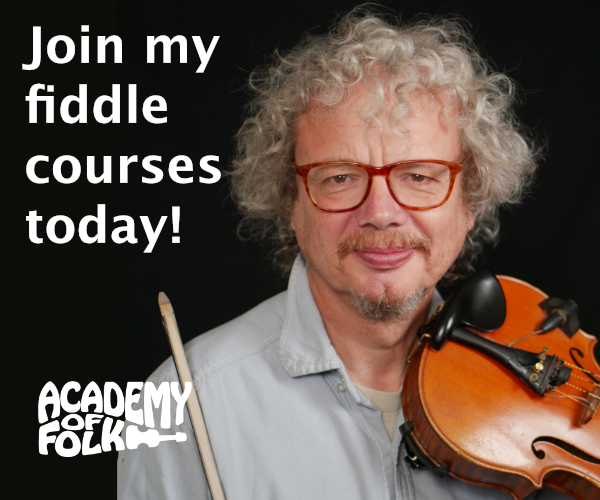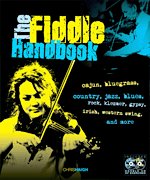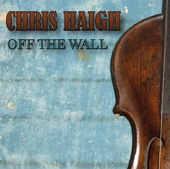
MENU TO FIDDLE STYLES:
Scottish Fiddle
PART ONE ; The History of Scottish Fiddle Music; PART TWO ; Regional fiddle styles in Scotland; PART THREE ; the music-tune types, modes, bowing and ornamentation; PART FOUR ; Contemporary Scottish Fiddle
2.Regional Fiddle Styles in Scotland
As with many countries that have well developed fiddle traditions, in Scotland it is possible to recognise a number of regional styles with distinctive approaches to bowing, ornamentation and repertoire. These styles would originally have become differentiated due to the limited opportunities for travel in past centuries, so that specific local influences- particulalry gifted individual players, local dance traditions, or outisde influences from across borders- would shape the local fiddle styles. In the 21st century, the original conditions which shaped these styles are all but gone, and nowadays a young person learning the fiddle in Scotland has no restrictions on what style or repertoire he may wish to learn. However, this has by no means led to the downfall of regional styles. Today a great deal of value is placed on the continuity of local tradition, and performances, recordings, books and workshops all very often stress the badge of authenticity which derives from playing in a specific regional style.
Below is a brief introduction to some of these regional Scottish fiddle styles.
North East Style
The North East of Scotland, comprising Aberdeenshire, along with the former counties of Moray, Cincardine and Banff, can lay claim to having the longest and most influential fiddle tradition in Scotland, and could indeed be regarded as the mainstream of Scottish fiddling.
A common feature that outsiders note about Scottish fiddle in general is its relative closeness to classical playing; rich tone, use of vibrato, difficult keys, higher positions and fancy bow work. In fact these are all particular characteristics of the North East style. The North East can lay claim to an unbroken 250 tradition of first rate fiddler/composers, from William Marshall to the present day.
William Marshall
Marshall (1748-1833) is remembered for strathspeys such as the Marquis of Huntley’s Farewell. His contemporaries included Isaac Cooper (1755- 1810?), William Christie (1778-1849); Donald Grant, of Elgin, and Charles Grant (1806-1892). Niel Gow (1727–1807), from Inver in Perthshire was one of Scotland’s most famous fiddlers, and is credited with developing the “up driven bow” style, which is such a feature of strathspey playing. Both he and his son Nathaniel were also successful tune publishers. Willie Blair (1794-1884) was known as “The Queen’s Highland Fiddler”, and wrote many tunes associated with Queen Victoria and the people and places she knew. Also well known was Peter Milne (124-1908), the “Tarland Minstrel.”
Perhaps the most influential of all North east fiddlers was J Scott Skinner (1843-1927), who did more than anyone to raise the game of Scottish fiddling, setting standards of technique and composition which made him (not least in his own eyes) the equal of any classical musician. 20thC fiddlers from the region included Bert Murray of Aberdeen, and William McPherson of Elgin (1919-74). Paul Anderson of Tarland in Aberdeenshire is regarded as the archetypal north east fiddler today, and, with modesty becoming of Scott Skinner himself, is proclaimed on his website as “The finest Scots fiddler of his generation.”. A brief look at any of Anderson's videos demonstrates the extremely physical nature of Northeast bowing, with every inch of bow from heel to tip being in constant use.
Alastair J Hardie had this to say about the North East style;
"If one had to single out the strongest feature of fiddling in the Northeast of Scotland it would have to be its predominant concentration on the rhythmic and associated bowing characteristics of the strathspey. This bias towards the dotted rhythm so strongly permeates the playing... that it intrudes into the strains of more even-rhythmed tunes"
Shetland style fiddling
Duke Ellington said that there are only two types of music which possess swing; one is jazz, the other Scottish music. He had almost certainly been listening to musicians from Shetland. Despite their tiny size and population, these island have a distinctive, vibrant and influential style of traditional music with the fiddle at its heart. The Shetlanders have drawn on a range of musical sources, from the virtuosic if rather formal Scott Skinner to the lilting style of the Irish, the "ringing strings" of Scandinavia and the country and swing of America.
The fiddle has played a pivotal role in Shetland society for centuries. Up until the start of the 19th C the Islands had their own unique fiddle, the Gue- an instrument with two horsehair strings, played upright, and perhaps related to the Welsh Cwrth, the Icelandic Fidla, the Norse Gigla or the Eskimo Tautirut.
The best known fiddle tunes are reels. They are usually played fast, and may be ornamented by little triplets known as "shivers" and by the occasional droning of open strings-giving a bright ringing sound reminiscent of the hardangefele of Norway. Traditional reels are often in simple repeated 4-bar sections, suitable for accompanying the dancing of the 16-bar Shetland Reel. Examples include If I get a bonny lass and Jeannie shock da bairn.. The backing, often on piano or guitar, uses a rich vocabulary of passing chords and running bass lines more often seen in jazz. There is a distinctive and highly infectious swing to Shetland reels, and Willafjord, for example, is a tune full of syncopation. To quote Tom Anderson. "If du imagines some een gaen wi wan fit ida stank an de idder een a broo an gaein a lunk as dey go alang, dat's da kind o' syncopated rhythm du haes to get whin du plays dis een!" (If you imagine someone walking with one foot in a ditch and the other on a hill, and giving a skip as they go along, that's the sort of rhythm you have to get when you play this one!)Many of the tunes played today are recent compositions, though some are ancient, dating from the Norse occupation (up till 1469)- referred to as "Auld Reels" or "Muckle Reels". Older still, perhaps, are "Trowie tunes" or "Ferry tunes" said to have been learned from Shetland's faeries. The Shetland tune Da Peerie Hoose in under da Hill, for example, is a Trowie tune. Other examples are Garster's Dream, learned in a dream by a fiddler who slept on a trowie knoll, and Da Ferry Reel from Yell, played in the tuning ADAE.
Spence, in his 1899 book Shetland Folklore, wrote "it is said that the trows were great lovers of music, and the fiddlers of the olden time could discuss lightsome lilts known as fairy reels, that had been learned from the hillfolk"
Slow airs and waltzes are another feature of Shetland music, requiring a rich tone and vibrato on the fiddle, with some double stopping and sliding of notes reminiscent of American fiddling. Two particularly beautiful airs are Da Slockit Light and The Silvery Voe.
Tom Anderson
The acknowledged master of Shetland fiddling was Tom Anderson, who before his death in 1991 collected and documented a great deal of the fiddling tradition, as well as being a prolific composer. He was the first leader of the Shetland Fiddlers Society (informally known as Da Forty Fiddlers), and in 1983 he started Shetland's Young Heritage, a group which has done much to ensure a healthy future for the Shetland fiddle.S
Shetland's Young Heritage
It has been said that today, in no small part due to the influence of Tom Anderson, as many as 10% of all Shetland schoolchildren are learning traditional fiddle. He also taught many of today's leading players including Catriona McDonald and Aly Bain. Aly in turn has been a great inspiration to many through his broadcasting and his work with Boys of the Lough. His TV series Down Home gave a fascinating insight into the links between Shetland fiddling and many of the American styles including cajun, western swing and bluegrass.
Catriona Mcdonald is one of six fiddle players who make up Blazin' Fiddles, a band whose members between them virtually the full range of Scottish fiddling. Their name comes from the regretable 19th Century practice of fiddle burning encouraged by the Church; a tune that all fiddlers should learn by way of retribution is Deil stick the minister!
Willy Hunter was another influential player who wrote many fine tunes, including Leaving Lerwick Harbour.
Willie Hunter with pianist Violet Tulloch
West Coast and Highland style
Whereas both Shetland and the North East have a well preserved and pretty well unbroken tradition of fiddling, things have not gone so well in the wild upland areas of Western Scotland. Here Gaelic was the chief language, and the region was isolated both physically and culturally. After the Reformation this was the area most affected by the strong disapproval of the Kirk (the church) for all things to do with sinful enjoyment- dancing, drinking and fiddle music. Fiddles were actually burned, broken or hidden away. The repression following the Jacobite rebellions, the break-up of the centuries old clan system, and the notorious Highland Clearances, all led to the widespread fracturing of communities, and depopulation of large areas. Many moved to lowland or coastal areas, and more still emigrated to America.
As a result of all this little is known about the role of the fiddle, or the way in which it was played in the 18th and 19th Centuries. Undoubtedly the fiddle took on some of the repertoire and playing characteristics of the bagpipes, which were officially banned for a period after the Jacobite Rebellion, in 1747- many pipers actually switched to the fiddle at this point. Drones and fast, florid grace notes are a direct imitation of piping style, as is the use of the bagpipe mode (approximating to the Myxolidian), with a flattened seventh note; the bagpipe cannot play a G# note. When playing a tune in the key of A, some players will deliberately play the G note neither sharp nor flat but “blunt”, that is to say somewhere in between the two. This gives an effect very much like what a bagpipe would come out with- either exquisite of agonising depending on your point of view. Triplets and birls ( a very fast bowed stutter or shiver) are often used, and jigs are played with a strong accent on the first of each three quavers. If Strathspeys are the domain of the North East, the 2/4 pipe march is the most characteristic of the highlands. Though I’ve yet to hear exactly how, it’s commonly said that the Gaelic language itself is an important factor in influencing the inflection and phrasing of this style of fiddling. Marches and jigs make up the majority of the repertoire, though there are also many beautiful slow airs, thought to be based on ancient gaelic songs.
Aonghas Grant
If you want a contemporary representative of West coast fiddling, look no further than the Grant family. Angus Grant senior (Aonghas to his friends), "the left-handed fiddler of Lochaber” is a Gaelic speaker himself, and learned fiddle from his father and uncle. Typical of his tradition, he plays by ear and has never learned to read music. In his own words, he says of such players “ None of them knew anything of written music, but they were natural musicians who used complex bowing patterns, mordents, acciaccatura ornamentation and vibrato in some cases. They did so as a matter of course…” His son is also Angus Grant, the “hirsute and obliquely spoken” wild man of the highland fiddle, fronting the magnificently adventurous Shooglenifty. Iain McLachlan, from the bleak island of Benbecula is another fine exponent of this distinctly old world style of playing; he is best known for his composition, frequently assumed to be traditional, the mysterious Dark Island. The American fiddler Bonnie Rideout, three times US National Scottish fiddle championship winner, has made a study of West coast fiddling, discovering a long-lost hoard of tunes, “The Patrick MacDonald Collection”. This manuscript, from 1781, contains Gaelic airs and melodies from the Scottish Highlands and west coast. She has also resurrected the art of playing pibrochs on the fiddle. These consist of a slow theme or urlar, followed by a complex set of variations. Many were written for the fiddle in the 18th C, or else transposed from bagpipe players, but by the end of the 19th C this practice had completely died out among fiddlers, no doubt due to the level of concentration required by both player and listener alike.
Borders styleBorders Fiddle style (mine) One of the lesser known Scottish fiddle traditions comes from the Borders area- the south east corner of Scotland bordering Northumbria in England. The Northumbrian influence is demonstrated by the frequent playing of hornpipes. Slow airs are also popular. Double stopping and heavy chordal accompaniment on the fiddle are common, especially when two or more fiddlers play together. This style may date from the 18thC, when fiddlers began playing with, and competing with, lowland pipers.
Tom Hughes is often regarded as a good example of the style, which he learned from his parents and grandparents. You can hear a number of Borders fiddlers on the CD “Borders Fiddles Volume 1”, on the Border Traditions label. It features new and archive recordings by the Border shepherd Bob Hopkirk, Andrew Harvey, Will Renwick, Ian Anderson, Jimmy Nagle, Wattie Robson and James Wilkie.
A young contemporary group carrying on the tradition are “Border Fiddles”, a six piece band including Lori Watson, who has spent much time researching the style.
Border Fiddles
___________________________________________________________________________________
Check out my London-based Ceilidh band QUICKSILVER
Chris Haigh is a London-based fiddle player. He plays many styles, but has a large repertoire of Scottish fiddle tunes, which he plays either solo (for private functions) or with his ceilidh band Quicksilver. He has appeared at the Edinburgh Folk Festival, the Glasgow Celtic Connections festival, and five times at the Shetland Folk Festival. He has written and recorded a cd of tunes in Scottish traditional style for use as TV production music; tracks from this album have appeared on programmes throughout the world.
Links:
- Article on Neil Gow
- Article on Scott Skinner
- A synopsis of Peter Cooke's book on Shetland fiddling
- Scottishfiddling.org
- Scottish fiddle.com (An excellent new resource including sheet music downloads)
- Catherine Fraser (Australian based Scottish fiddler)
- Linda Rankin (another Scots fiddler based in Australia)
- Scotchsnap.com (good online source for Scottish sheet music)
- Taransay Fiddlers (week- long fiddle course on a Hebridean island)
RETURN TO FIDDLINGAROUND HOMEPAGE


